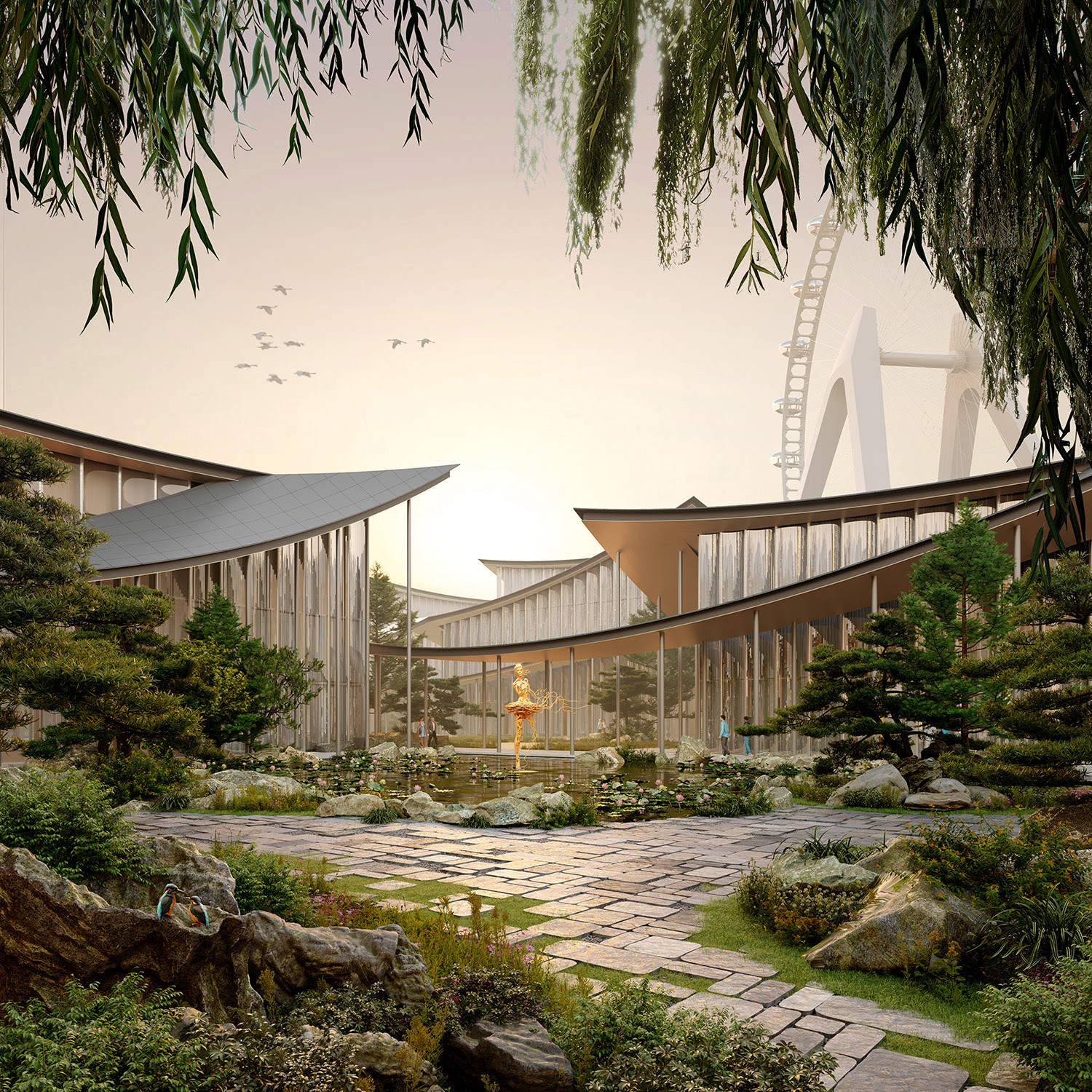
Construction on the Suzhou Museum of Contemporary Art, designed by ARTS Group, Bjarke Ingels Group (BIG) and Front Inc. has topped out in Jiangsu province, close to Shanghai.
The 60,000-sq-m museum is conceived as a village in gardens featuring 12 pavilions, four of which will contain the main gallery spaces, with others hosting an event hall, theatre, restaurant and grand entrance.
The pavilions are connected above and underground by bridges and tunnels. Paths leading through the site aboveground will be covered with natural stone.
Each of the pavilion façades is made from rippled glass and warm-toned stainless steel, which reflect the colours of the surrounding garden.
A ribbon-like roof folds over the building’s eaves, offering shelter from the elements on the external pathways. Draping knots on the walkways extend outwards, allowing the architecture to intertwine with the landscape.

The project is part of a larger Suzhou development of Jinji Lake, reimagining the traditional garden known as a “lang 廊” a line that forms a path through multiple areas. Suzhou’s ferris wheel will allow those onboard to view the museum from above.
BIG founder Bjarke Ingels said: “Individual pavilions are woven together by glazed galleries and porticoes, creating a network of interconnected sculpture courtyards and exhibition spaces.
“The result is a manmade maze of plants and artworks to get lost within. Its nodular logic only becomes distinctly discernible when viewed from the gondolas above.
“Against the open space of the lake, the gentle catenary curvature of the roofs forms a graceful silhouette on the waterfront. Viewed from above, the stainless roof tiles form a true fifth facade.”










